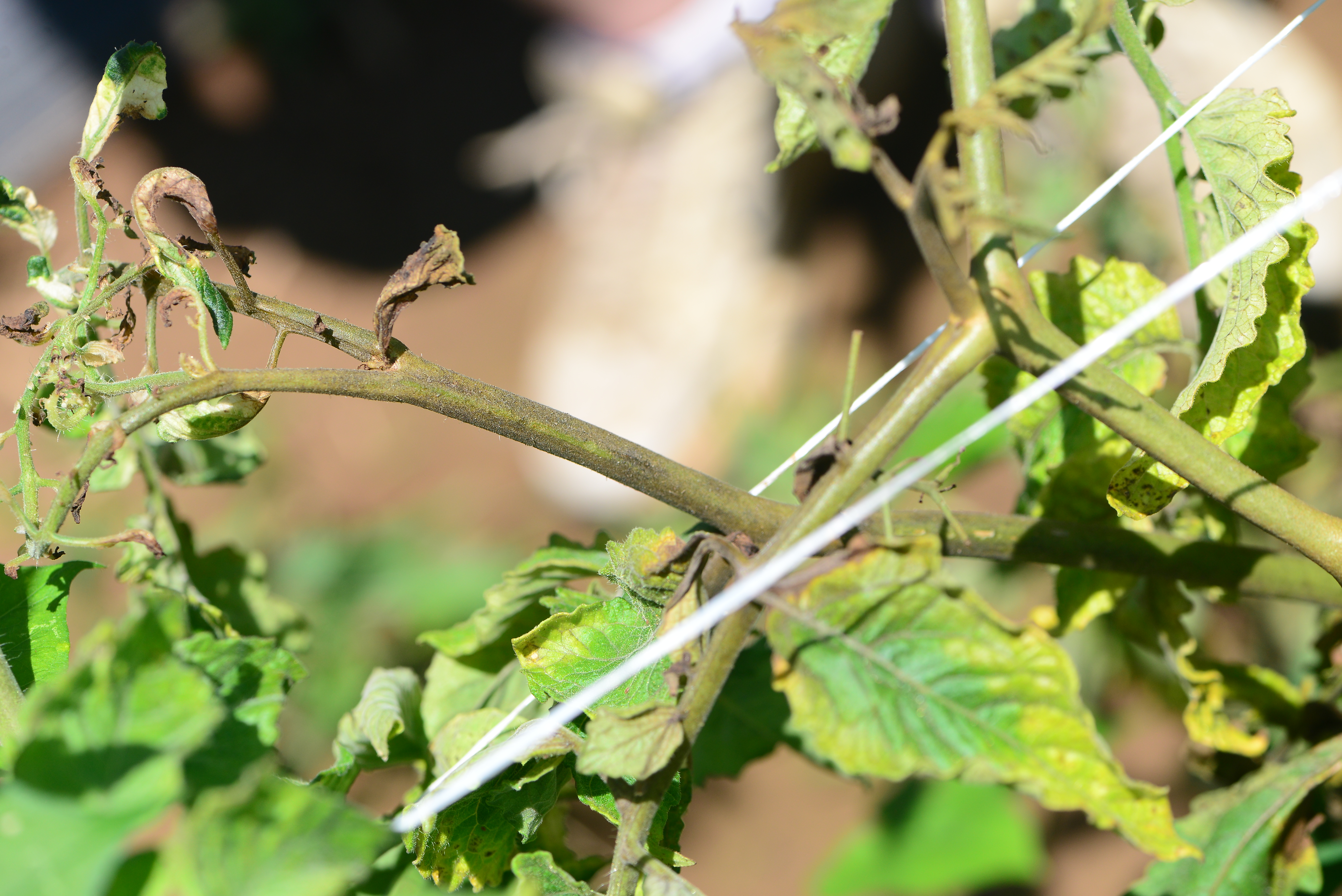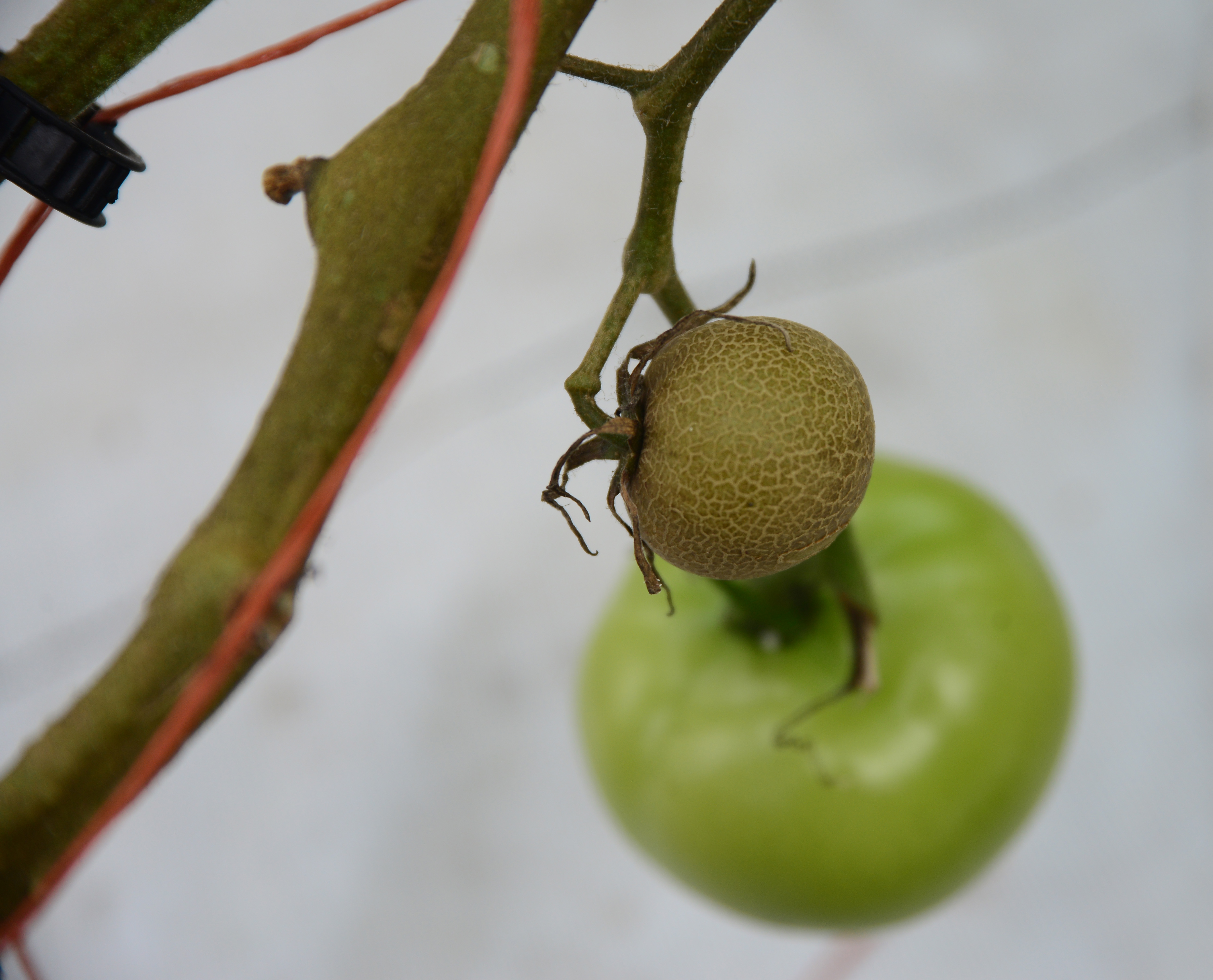Tomato Russet Mite
Return to Insect & Other Arthropod Pests
Tomato russet mite (Aculops lycopersici) causes bronzing of tomato stems and yellowing and drying of leaves. Damaged fruit remain small, turn brown, and have a russetted appearance. Symptoms move up plants from lower areas. Presence of this mite can only be confirmed with a hand lens (10X or greater) or microscope. Look for minute, cone-shaped mites on the green tissue. While this mite feeds on various solanaceous vegetables, damage has only been observed on tomato in Kentucky.
Tomato russet mites.
(Photo: Ric Bessin, University of Kentucky)

Bronzed, greasy appearance to stems from tomato russet mites.
(Photo: Ric Bessin, University of Kentucky)

Undersized, dark, russetted fruit from tomato russet mites.
(Photo: Ric Bessin, University of Kentucky)
Management:
- Watch for characteristic damage; once tomato russet mite is confirmed, treat with an approved miticide. Miticides that control spider mites are not necessarily effective against russet mites. Evaluate miticide effectiveness by tagging the limits of stem bronzing on a plant and monitoring it for additional damage.
- Remove alternate hosts, such as nightshades, bindweed, and morningglory, from in and around structures.
Biological control:
- If your structure has a history of tomato russet mite infestations, consider releasing Amblyseius fallacis predatory mites.
